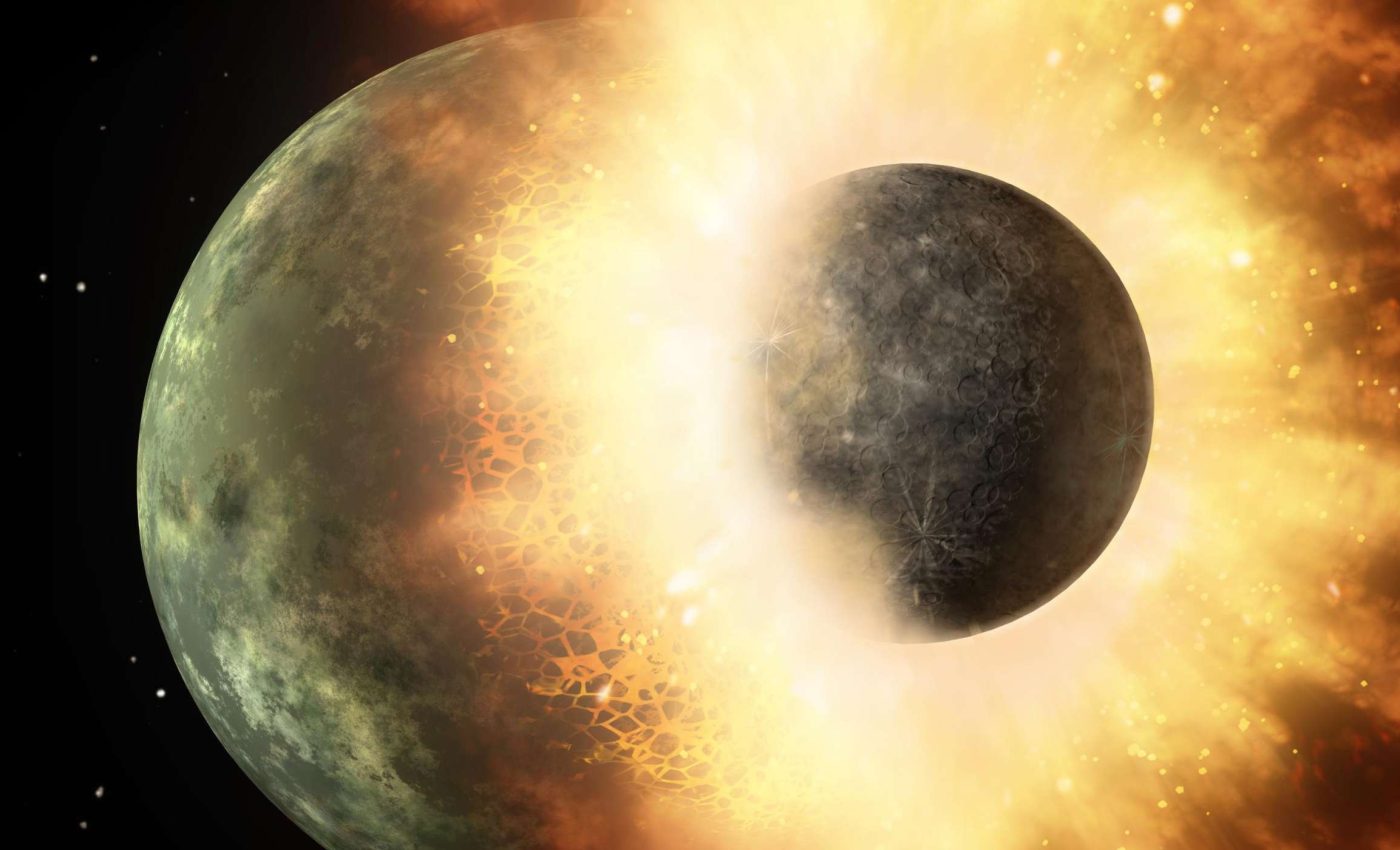
Ancient rocks provide the first physical evidence of the surviving proto-Earth
Earth wasn’t always the pale blue planet we know it to be today. About 4.5 billion years ago, an object the size of Mars, named Theia, smashed into a “proto-planet,” a developing world still forming from cosmic dust and rock, which eventually became Earth.
The collision fundamentally changed our planet’s chemical makeup and also gave us the Moon.
Scientists have uncovered ancient rocks that were once part of the pre-collision Earth. These surviving pieces carry a unique chemical signature that does not match that of any other Earth rocks or previously tested meteorite samples.
The study reported an imbalance in potassium-isotope levels between ancient rocks from Earth’s deep mantle and modern volcanic stones. The older rocks contained less of the isotope compared to their newer counterparts.
These rocks provide the first physical evidence of the proto-Earth that existed before the giant collision. Their chemistry could offer clues about the conditions that shaped the early Earth and the young Solar System.
Solving cosmic timeline mystery with potassium-40
Potassium-40 (⁴⁰K), along with ³⁹K and ⁴¹K, form the trio of naturally occurring potassium isotopes. The rarest is ⁴⁰K – only one in every 8,500 potassium atoms found in nature is in this form.
Apart from accounting for roughly 50% of our body’s natural radioactivity, this isotope also helps determine the ages of planetary materials.
Like any other radioactive material, potassium-40 decays over time. It has a half-life of over a billion years.
The isotope slowly decays into a more stable argon atom. By measuring the ratio of potassium-40 to Argon, scientists can study Earth’s history and the timing of events in the Solar System’s evolution.
Ancient rocks and deep lava deposits investigated in the study show an unusual potassium-40 signature. Compared to other Earth rocks, they have lower isotope levels, suggesting a different formation environment.
In search of a better explanation, researchers revisited earlier research on potassium-40 concentration in meteorites.
Potassium imbalance in rocks from space
Meteorites plummet into the Earth from different regions of the Solar System. Their chemical makeup reveals both their origins and the changing conditions of the Solar System over time.
In 2023, Nicole X. Nie, an author of this study, along with her colleagues, examined potassium isotope ratios in 32 meteorites collected from different sites across the globe.
They examined two types of meteorites: non-carbonaceous from the inner Solar System and carbonaceous from the outer Solar System.
The team found that isotope levels in meteorites from the inner Solar System were similar to those on Earth. However, the other samples showed significant anomalies. The potassium-40 ratios in carbonaceous meteorites were different from those found in most terrestrial materials.
They suggested that the potassium anomaly might indicate that the meteorite material is older than the current Earth. A similar imbalance might have existed before the giant impact that changed our planet’s chemistry.
“In that work, we found that different meteorites have different potassium isotopic signatures, and that means potassium can be used as a tracer of Earth’s building blocks,” explained Nie in an MIT News report.
Searching for chemical anomalies on Earth
Scientists have long wondered what Earth’s chemistry looked like before the giant Theia impact. Physical remains from Earth’s early materials could shed light on the long-standing mystery of how its past compares to its present.
Drawing from the potassium anomaly study, the researchers decided to identify terrestrial samples that showed similar signatures.
To trace Earth’s earliest chemistry, the team ventured to some of the planet’s oldest terrains in Greenland, Canada, and South Africa. The powdered rocks they collected were as old as 3.5 to 4 billion years.
For comparison, they collected modern lava deposits from active volcanic hotspots such as Hawaii and La Réunion Island.
The researchers dissolved the samples in acid and separated the potassium. The extract was then tested using thermal ionization mass spectrometry. The instrument measured the ratio of natural potassium isotopes to reveal how much potassium-40 each sample contained.
Ancient mantle rocks had about 65 parts per million less potassium-40 than other Earth rocks.
Ruling out geographical processes
The isotope-deficiency signatures made the ancient samples stand out from terrestrial samples. Assuming that the ancient samples were remnants of the proto-Earth, the team developed a series of simulations.
A model of proto-Earth was built assuming it was composed of material low in potassium-40. Simulations then studied the impact of the Moon-forming collision and later meteorite strikes on its chemistry.
To rule out ordinary Earth processes as the cause of the potassium-40 deficit, the team simulated geological events over billions of years.
All the simulations matched Earth’s current potassium-40 levels, not the lower levels found in the ancient samples. The deficit hints at materials that remained untouched by the chemical changes brought on by the collision.
These findings provide the first-ever physical evidence of what our planet was like during its pre-Moon days. This discovery might just take us one step closer to uncovering the planet’s long-lost history.
The full study is published in Nature Geoscience.
—–
Like what you read? Subscribe to our newsletter for engaging articles, exclusive content, and the latest updates.
Check us out on EarthSnap, a free app brought to you by Eric Ralls and Earth.com.
—–













